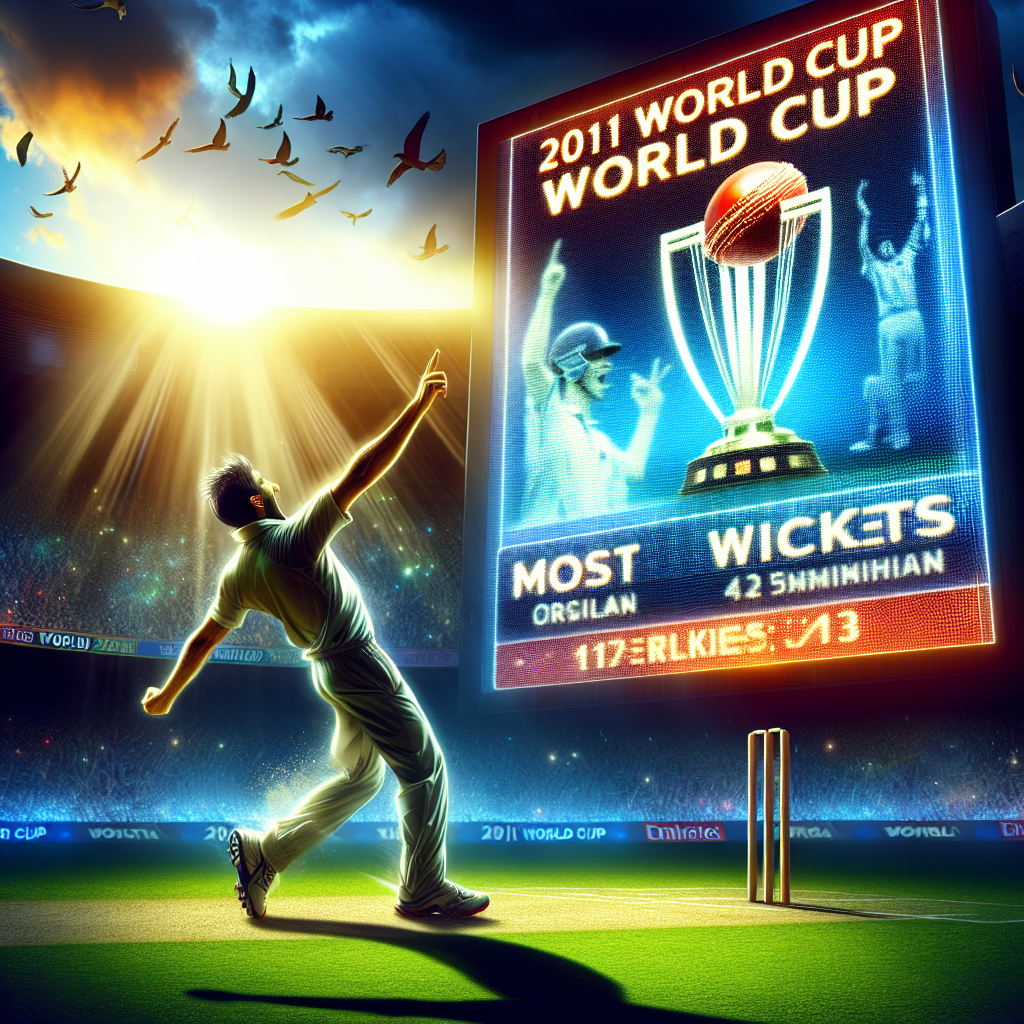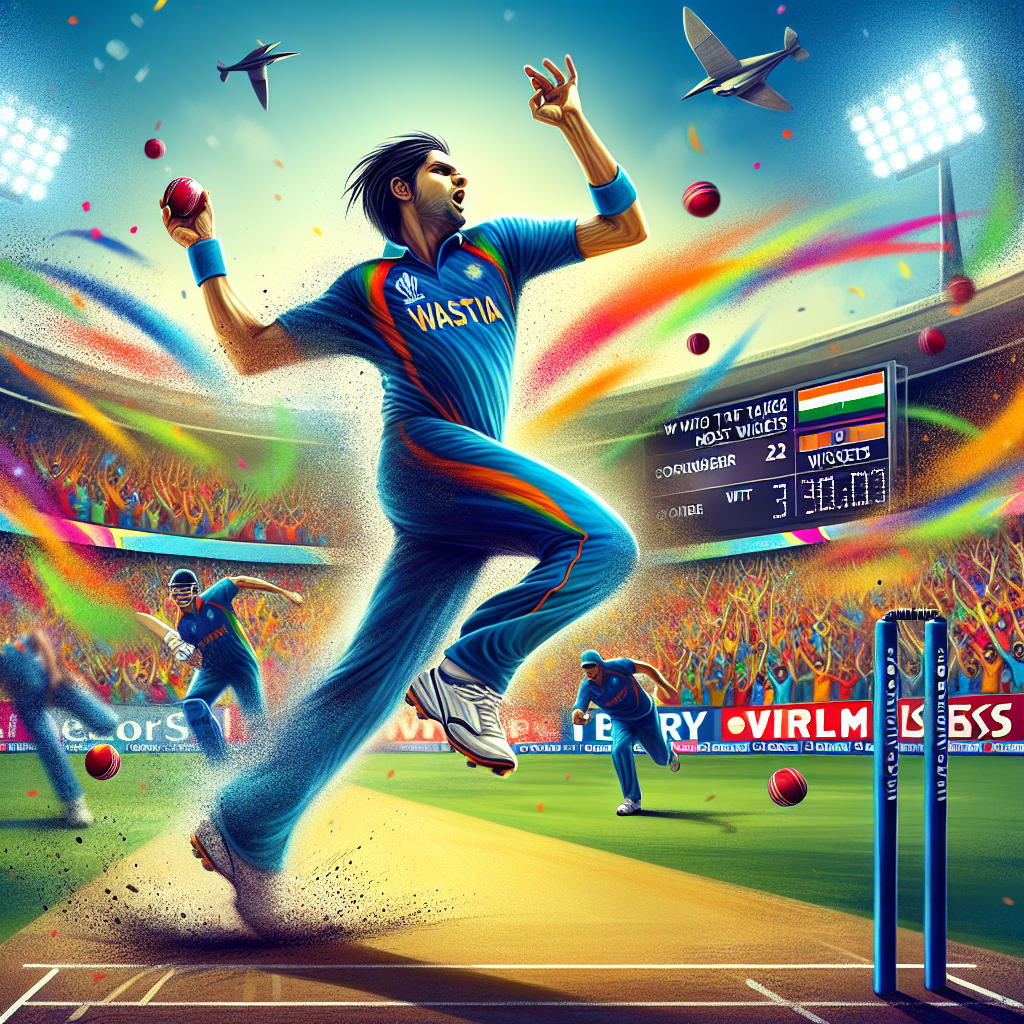
The ICC Cricket World Cup 2011 was a tournament that captured the imagination of cricket fans around the globe. Co-hosted by India, Sri Lanka, and Bangladesh, it was a spectacle of skill, strategy, and sportsmanship. While the tournament is often remembered for India's triumphant victory, the bowlers played a crucial role in shaping the outcomes of many matches. This article delves into the performances of the bowlers who took the most wickets in the 2011 World Cup, analyzing their impact and contributions to their respective teams.
Overview of the 2011 World Cup
The 2011 World Cup was the tenth edition of the ICC Cricket World Cup. It featured 14 teams, with matches played across 13 venues in the three host countries. The tournament spanned from February 19 to April 2, culminating in a thrilling final at Wankhede Stadium in Mumbai, where India defeated Sri Lanka to lift the trophy.
Bowlers played a pivotal role throughout the tournament, with several matches being decided by their ability to take crucial wickets at key moments. The pitches in the subcontinent were generally conducive to spin, but fast bowlers also made their mark with pace and swing.
Top Wicket-Takers of the 2011 World Cup
Among the many talented bowlers who participated in the 2011 World Cup, a few stood out for their exceptional performances. Here, we highlight the top wicket-takers of the tournament:
- Shahid Afridi (Pakistan) - 21 wickets
- Zaheer Khan (India) - 21 wickets
- Tim Southee (New Zealand) - 18 wickets
- Muttiah Muralitharan (Sri Lanka) - 15 wickets
- Robin Peterson (South Africa) - 15 wickets
Shahid Afridi: The Spin Wizard
Shahid Afridi, the charismatic all-rounder from Pakistan, was the joint highest wicket-taker in the 2011 World Cup. Known for his aggressive leg-spin bowling, Afridi was instrumental in Pakistan's journey to the semi-finals. His ability to take wickets in the middle overs often turned the tide in Pakistan's favor.
Afridi's standout performance came against Canada, where he took 5 wickets for just 23 runs, showcasing his ability to dismantle batting line-ups. His leadership and bowling prowess were key factors in Pakistan's strong showing in the tournament.
Zaheer Khan: The Indian Spearhead
Zaheer Khan was India's leading bowler in the 2011 World Cup, sharing the top spot for most wickets with Afridi. His ability to swing the ball both ways and deliver under pressure made him a vital asset for the Indian team. Zaheer's knack for breaking partnerships and taking wickets at crucial junctures was evident throughout the tournament.
One of his memorable performances was in the final against Sri Lanka, where he took 2 wickets for 60 runs, helping India restrict the opposition to a manageable total. Zaheer's contributions were pivotal in India's successful campaign.
Tim Southee: The Kiwi Sensation
Tim Southee emerged as New Zealand's leading wicket-taker in the 2011 World Cup. His ability to generate swing and seam movement made him a formidable opponent for batsmen. Southee's best performance came against Pakistan, where he took 3 wickets for 25 runs, helping New Zealand secure a crucial victory.
Southee's consistent performances were instrumental in New Zealand reaching the semi-finals, and his ability to strike with the new ball set the tone for many of their matches.
Muttiah Muralitharan: The Spin Maestro
Muttiah Muralitharan, one of the greatest spinners in cricket history, was a key figure in Sri Lanka's bowling attack. Despite battling injuries, Muralitharan's experience and skill were evident as he took 15 wickets in the tournament.
His ability to deceive batsmen with his variations and extract turn on subcontinental pitches made him a constant threat. Muralitharan's contributions were crucial in Sri Lanka's journey to the final, where they eventually finished as runners-up.
Robin Peterson: The South African Surprise
Robin Peterson was a surprise package for South Africa in the 2011 World Cup. His left-arm orthodox spin proved effective on the slow pitches of the subcontinent, and he ended the tournament with 15 wickets.
Peterson's best performance came against Bangladesh, where he took 4 wickets for 12 runs, helping South Africa secure a dominant victory. His ability to bowl economically and take wickets made him a valuable asset for the Proteas.
Impact of Bowlers on the Tournament
The performances of these bowlers had a significant impact on the outcomes of matches and the overall dynamics of the tournament. Their ability to take wickets at crucial moments often shifted the momentum in favor of their teams. Here are some key insights into their impact:
- Middle Overs Control: Bowlers like Afridi and Muralitharan excelled in controlling the middle overs, applying pressure on the opposition and forcing errors.
- Partnership Breakers: Zaheer Khan and Tim Southee were adept at breaking partnerships, often providing breakthroughs when their teams needed them the most.
- Adaptability: The ability of these bowlers to adapt to different conditions and pitches was a testament to their skill and experience.
- Leadership: Afridi and Zaheer, in particular, led by example, inspiring their teammates with their performances and leadership qualities.
Conclusion
The 2011 World Cup was a celebration of cricketing excellence, and the bowlers played a crucial role in making it a memorable tournament. The performances of Shahid Afridi, Zaheer Khan, Tim Southee, Muttiah Muralitharan, and Robin Peterson were instrumental in shaping the outcomes of matches and the fortunes of their teams.
Their ability to take wickets at crucial moments, control the flow of runs, and adapt to different conditions highlighted the importance of bowlers in the limited-overs format. As we reflect on the 2011 World Cup, it is clear that these bowlers left an indelible mark on the tournament, contributing significantly to its success and legacy.

